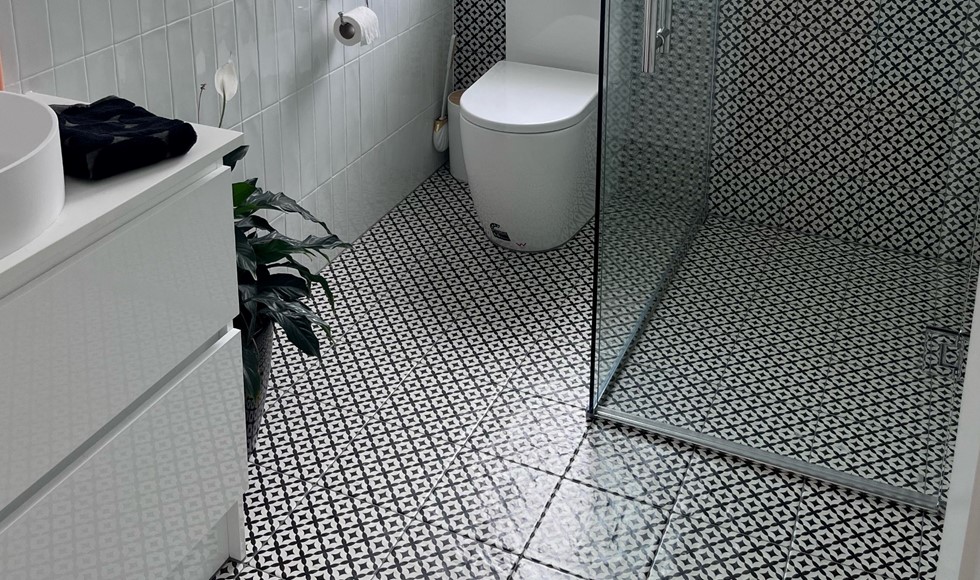
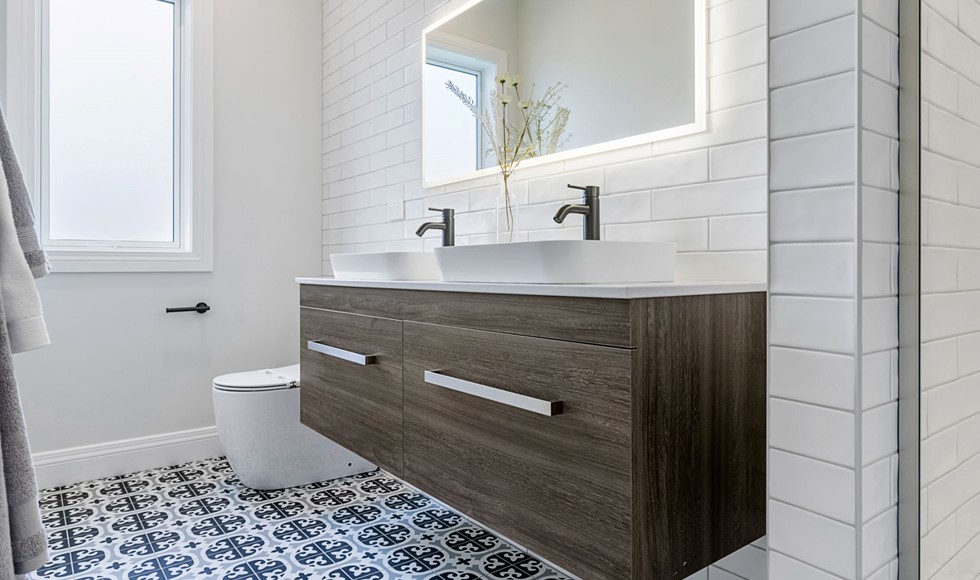
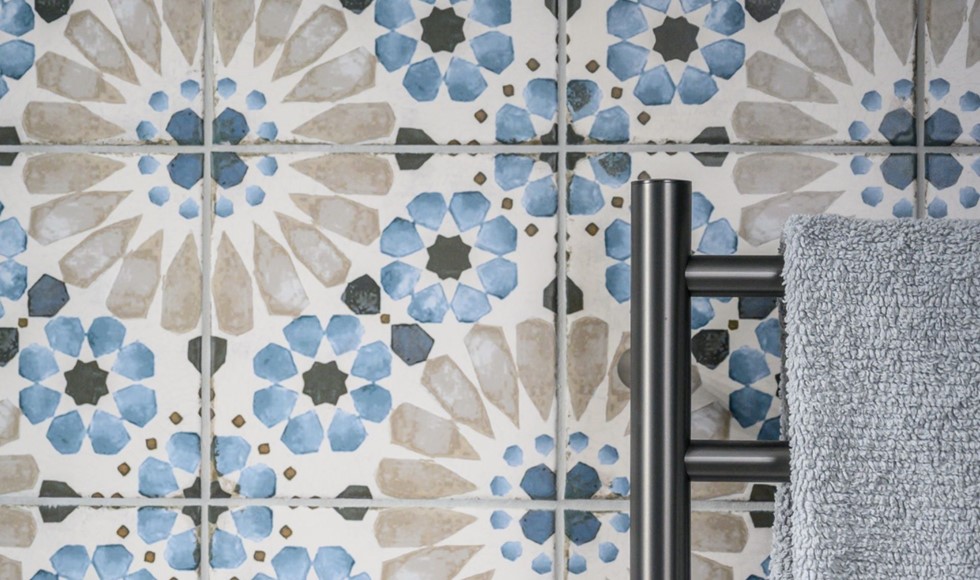
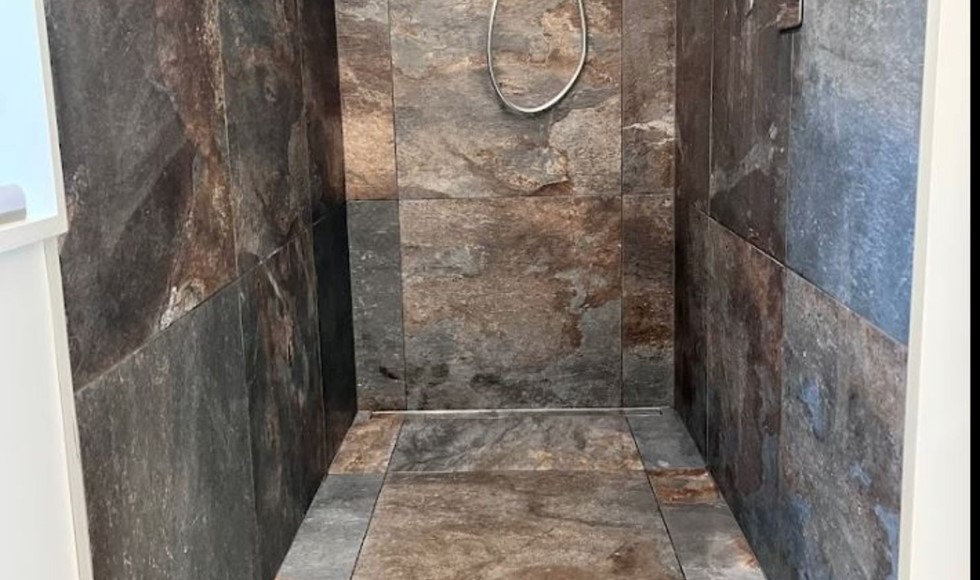
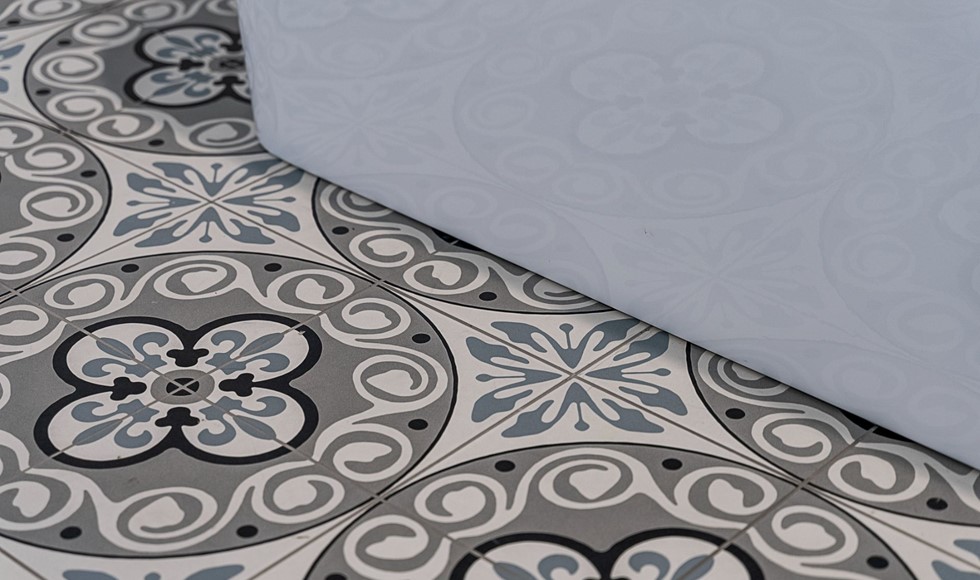
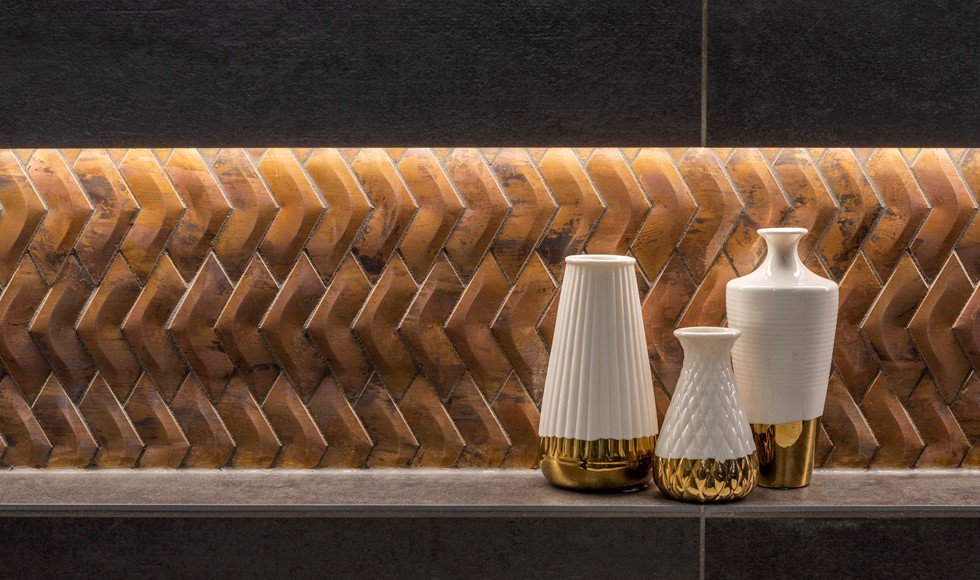
Choosing a tile for your bathroom is often tricky, but it is made harder when your bathroom is small…
Below we address some commonly asked questions on how to make the most of a small bathroom space.
Bathrooms are the place you start and finish your day, so it’s important to create a special place that is practical yet provides the opportunity to relax. If you’re looking to renovate or design a small bathroom, this can seem a challenge, especially when designing to an existing footprint. However there are options! The space can be made to look bigger if the following is considered before finalising plans and layout.
What size tile should I use in a small bathroom?
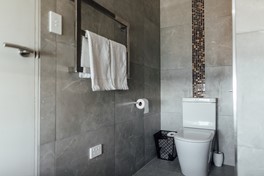
A small bathroom can actually benefit from a large tile. With fewer grout lines the walls and floor are less cluttered and the room visually expands. This concept is effective, because as our eyes see large tiles, our brain automatically associates them with a large space, in effect tricking it into thinking it is looking at a greater area than it really is. Large-format tiles also need less grout, less time to install, and require less maintenance.
Using smaller tiles, such as mosaics, will give you lots of grout lines, which can give the bathroom walls a grid-like appearance that can promote the feeling of being boxed in – making your bathroom feel smaller still.
This doesn’t mean you have to rule out small tiles, however. If you've fallen for some beautiful mosaics, you can mix it up a bit by using different sized tiles in different zones of your bathroom, with smaller tiles being limited to the showering area, a larger format tile used in the majority of the room, and mosaic tiles in alcoves or recesses (spaces you don’t expect to feel generously-sized).
One can either use the same tile on the wall and floor or create a contrast with large square tiles on the floor and rectangular 300 x 600mm tiles on the walls. Depending on the direction laid, the rectangles will appear to either lengthen the room or increase the height.
Top tip
The single biggest influence on the look of a bathroom is the choice of tiles. This will determine paint colour, vanity colour, tapware finish and hardware, so spend more time on selecting the right tiles, and the rest will follow.
What type and colour of tile should I consider using for my small bathroom?
White reflects maximum light and gives a feeling of openness. Therefore, white is highly recommended and a popular choice. However, it’s also a safe option so if you’d like a little more originality and potentially, a better design, go for light colour tiles such as the on-trend aqua greens, ocean blues and subtle greys - these lighter hues can greatly transform a small bathroom.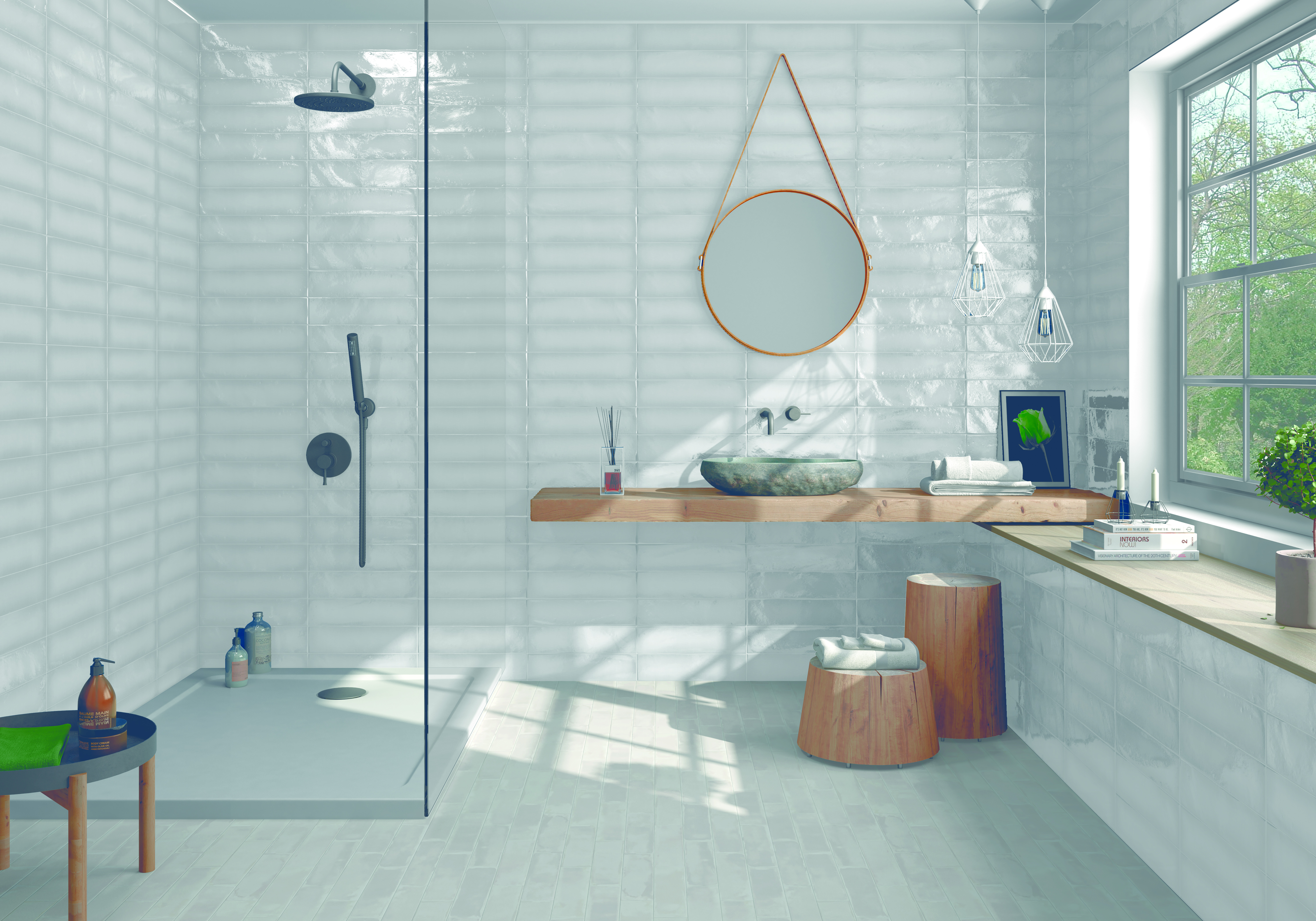
However, don’t shy away from dark colours, especially on floors. A darker tile can be used effectively to add a sense of depth to a space, either throughout the room or flooring to give the impression of a wider and longer area.
Alternatively, dark or coloured grout lines can make a bit of design statement and can work well in small bathroom. Metro tiles or simple rectangular tiles are the perfect opportunity to chose a contrasting grout and even in a small bathroom, can look super stylish.
A subtle way to add interest without closing in the look of a small bathroom is by using texture. Tiles with 3D surfaces instantly grab attention, whether they’re in small-scale mosaic patterns, regimented ribbed designs or feature undulating wave effects. Opting for white or neutral colourway will give you the confidence to play around with the design, combining textured tiles with co-ordinating smooth ones to divide up the space.
A clever trick to use in small bathrooms is to lay your tiles in diagonal patterns, which tricks the eye into seeing the space as bigger than it really is. When you take a look at normal squared options they are fairly easy to count but arrange them diagonally and your eyes are drawn to the longest dimensions of the room. Popular chevron patterns can do this well.
If a diagonal tile pattern doesn’t sound appealing, consider laying your tiles in a brick bond. This is a popular choice for metro tiles but helps limit the grid pattern effect mentioned earlier, which can emphasise the limited width and height of a room.
What about Timber-look in the Bathroom?
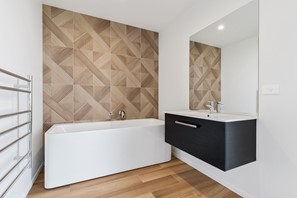 Are you looking to give your bathroom a unique, contemporary look that has some rustic flair? Consider wood-look tile for your bathroom including your shower. Obviously real wood presents some major difficulties in the bathroom, let alone in the shower. Which is why wood-look porcelain tile has become so popular the world over, including in New Zealand homes. Timber-tile gives you a realistic wood-grain look with the natural variations found in hardwood along with the durability and ease of maintenance you simply can’t get with anything but tile. It’s the perfect combination.
Are you looking to give your bathroom a unique, contemporary look that has some rustic flair? Consider wood-look tile for your bathroom including your shower. Obviously real wood presents some major difficulties in the bathroom, let alone in the shower. Which is why wood-look porcelain tile has become so popular the world over, including in New Zealand homes. Timber-tile gives you a realistic wood-grain look with the natural variations found in hardwood along with the durability and ease of maintenance you simply can’t get with anything but tile. It’s the perfect combination.
Some other tricks to consider!
- Paint the ceiling the colour of the walls.
- Take the tile in the shower up to the ceiling.
- Use clear glass in your shower.
- Go for plenty of natural light.
- Recess your cabinetry and shampoo shelving into the walls.
If you’re still unsure, use our Visualiser to help you design the ultimate space for your home. Select from a selection of 6 bathroom design options or load a photo of your own room first. Change out tiles, shapes, colours and grout colour to help make the decision process so much easier >>> VISUALISER
Our motto is to help make design and selection easy. We understand choosing tiles can be tricky but we’re here to help. Our staff are design trained, passionate about tiles and available to discuss your project and assist by phone, email and even facetime! Contact us today for a FREE consultation; 32 STORES NATIONWIDE.













